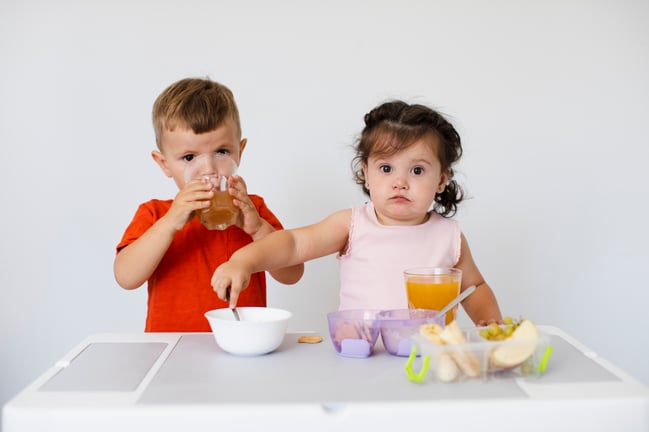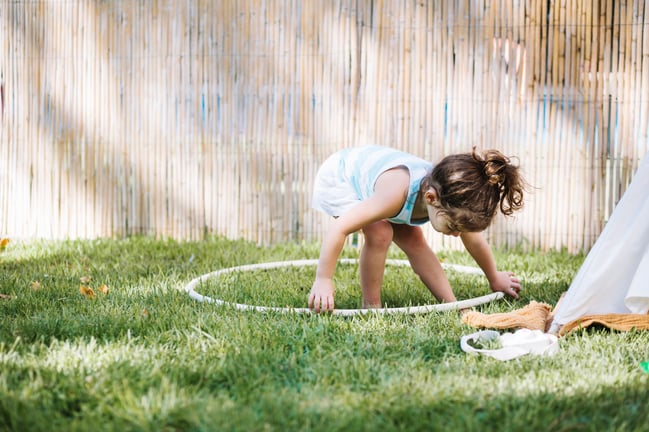
Health and Physical Development
Older Toddlers (18 to 36 months)
Components and Developmental Indicators
Older Toddlers (18 to 36 months)
Components and Developmental Indicators
Developmental Indicators
HPD Goal-1: Children develop healthy eating habits.
![]()
Occasionally able to make nutritious choices with support.
![]()
Feed themselves using utensils and hands.
![]()
Accept or refuse food depending on their appetite and personal preference (make food choices at a meal, leave unwanted food on plate, ask for seconds of favorite food).
![]()
Notice and talk about food preferences, textures, temperatures, and tastes (crunchy crackers, warm soup, sweet apples).
HPD Goal-2: Children engage in active physical play indoors and outdoors.
![]()
Show satisfaction with new active skills and strength (ask others to watch them. “I’m big and strong!”)
![]()
With guidance and support, transition from active to quiet activities.
![]()
Develop strength and stamina by spending moderate periods of time playing vigorously.
HPD Goal-3: Children develop healthy sleeping habits.
![]()
Use language about sleep (“Time for bed,” after clearing lunch things; give sign for sleep).
![]()
With guidance, participate in sleep routines (wash hands after lunch, get comfort item, listen to calming songs and/or stories, lie down on bed or mat).
![]()
Fall asleep on their own.
![]()
Sleep well, waking rested and ready for daily activities.
Developmental Indicators
HPD Goal-4: Children engage in play and movement to develop the large muscle control and abilities needed to explore and move in their environment.
![]()
Coordinate movements for a purpose (kick, jump, step, pedal, push away).
![]()
Move through the world with a variety of movements and with increasing independence and control (run, jump, pedal).
![]()
Use familiar objects that encourage large motor movements (riding toys, crawl tubes, large ball in basket, slide).
![]()
Perform actions smoothly with balance, strength, coordination (dance, bend over to pick up a toy, reach up high on a shelf, walk up and down steps).
HPD Goal-5: Children engage in play and experiences to develop muscle control and hand-eye coordination to manipulate objects and work with tools.
![]()
Use hands and eyes together with a moderate degree of control (complete puzzles, thread beads with large holes, use shape sorters, put on mittens, painting at easel).
![]()
Plan and use more complex refined hand movements (stack a few small blocks, draw, look for a favorite page in a book, practice self-care routines).
![]()
Use tools that require finger and hand control (large paintbrush, measuring cups, switches, shovel, rolling pin).
Developmental Indicators
HPD Goal-6: Children develop personal hygiene and self-care skills.
![]()
Initiate self-care routines and complete with guidance (put on some clothes, undress, throw away paper towel, begin to show interest in toileting).
![]()
Help with snack routines.
HPD Goal-7: Children use safe behaviors and personal safety practices with support from adults.
![]()
With guidance, remember cause and effect experiences and apply their experiences to future situations (avoid touching cold railing, walk slowly down steep hill where fall happened).
![]()
Increase self-control over their impulses (remind self not to touch something, wait for adult vs. running ahead).
![]()
Cooperate with adults in unsafe situation, such as being cautious with unknown dog and taking adult’s hand to cross street.



